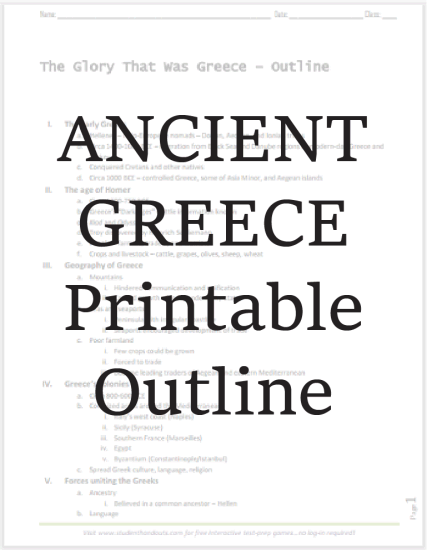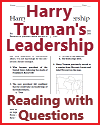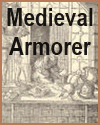| The Glory That Was Greece |
| www.studenthandouts.com > World History > Ancient Greece > Ancient Greece Outlines & PPTs |
|
I. The early Greeks a. Hellenes—Indo-European nomads—Dorian, Aeolian, and Ionian tribes b. Circa 1400-1000 B.C.E.—migration from Black Sea and Danube regions to modern-day Greece and Turkey c. Conquered Cretans and other natives d. Circa 1000 B.C.E.—controlled Greece, some of Asia Minor, and Aegean islands  II. The age of Homer
II. The age of Homera. Circa 1000-750 B.C.E. b. Greece's "Dark Ages"—little information known c. Iliad and Odyssey d. Troy discovered by Heinrich Schliemann e. People—farmers, traders, and warriors f. Crops and livestock—cattle, grapes, olives, sheep, wheat III. Geography of Greece a. Mountains i. Hindered communication and unification ii. Caused growth of independent city-states b. Seas and seaports i. Peninsula with irregular coastline ii. Seaports encouraged development of trade c. Poor farmland i. Few crops could be grown ii. Forced to trade iii. Became leading traders of Aegean and eastern Mediterranean IV. Greece's colonies a. Circa 800-600 B.C.E. b. Colonized areas around the Mediterranean i. Italy's west coast (Naples) ii. Sicily (Syracuse) iii. Southern France (Marseilles) iv. Egypt v. Byzantium (Constantinople/Istanbul) c. Spread Greek culture, language, religion V. Forces uniting the Greeks a. Ancestry i. Believed in a common ancestor—Hellen b. Language i. Spoke different Greek dialects but could understand one another ii. Used Phoenician alphabet and added vowels c. Literature i. Homer's Iliad and Odyssey ii. Mythological tales d. Religion i. Greek pantheon of gods and goddesses living on Mount Olympus ii. Zeus, Athena, Hades, etc. e. Olympic games i. Every four years 1. This four-year period was called the Olympiad ii. Began in 776 B.C.E. iii. Physical games—boxing, broad jumps, chariot racing, dashes, discus throwing, distance running, javelin throwing iv. Intellectual games—art, drama, music, poetry VI. Forces disuniting the Greeks a. First loyalty was to city-state i. Often fought one another ii. This disunity eventually allowed the Macedonians to conquer Greece b. Geography i. Mountains divided city-states and hindered communication c. Different types of government i. Athens—democracy ii. Sparta—authoritarian and militaristic nature iii. Also aristocracies, oligarchies, and tyrannies VII. Greek alphabet a. Egyptian hieroglyphics ↘ i. Egyptian hieratic (script or cursive) ↘ 1. Phoenician ↘ a. Greek ↘ i. Latin (used to write modern English) VIII. Sparta a. Spartans conquered Peloponnesians i. Peloponnesians became slaves, or helots 1. Helots outnumbered Spartans 20 to 1 2. Spartans feared that helots would revolt 3. Spartans became heavily militaristic in response IX. Life of a Spartan a. Birth i. Newborns brought to ephors (elders) for examination ii. Sickly babies left to die of exposure iii. Healthy babies 1. Boys lived with their parents until age 7 2. Girls stayed with their parents until marriage, and learned weaving, cooking, and cleaning b. Age 7 i. Boys sent to military school for strict physical training ii. Weapons and endurance training iii. Frequent beatings iv. Taught basic reading and to be laconic (use brief speech) c. Age 20 i. Young men became soldiers ii. Allowed to get married iii. But lived in the barracks until age 30 d. Age 30 i. These soldiers became citizens ii. Could vote and could live in their own homes iii. Remained in the military until age 60 X. Review questions a. The early Greeks came from where? b. What archaeologist discovered the remains of Troy? c. Describe the geography of mainland Greece. d. What forces united the Greeks? e. Explain the evolution of the Greek alphabet. f. Compare the life of a Spartan male with the life of an American male today. There are 26 more sections, for a total of 36. Click here to print. For a powerpoint version of this outline, click here. |
 |
 |
 |
 |
 |
 |
|---|
| Ancient Greece Books and Films | Ancient Greece Outlines and PowerPoints |
| Ancient Greece Maps and Pictures | Ancient Greece Study Games |
| Ancient Greece Miscellany | Ancient Greece Worksheets |
| www.studenthandouts.com > World History > Ancient Greece > Ancient Greece Outlines & PPTs |






